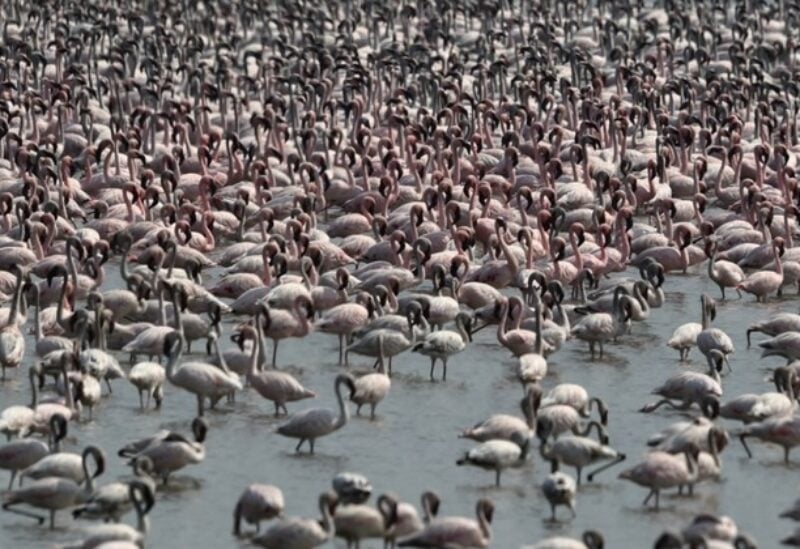
Flocks of flamingos are pictured in a pond in Navi Mumbai on March 29, 2021.
Sijoumi, TUNISIA: Hundreds of flamingos wade past waste in the murky waters of the vast Sijoumi lagoon, a critical wetland in the heart of Tunisia’s capital threatened by overexpansion.
Once set apart from the city, today half of Tunis’ residents live on the banks of the “sebkha”, or mudflat, where over 100,000 birds of nearly 100 different species spend winter.
The birds’ human neighbors complain of pollution, recurrent flooding and swarms of mosquitos from the lagoon, one of North Africa’s most important wetlands that became a dumping ground during decades of urbanization.
A government-led project that includes buildings, concrete embankments, and digging into the mudflat seeks to control pollution and regenerate the habitat, but some environmental groups have pushed back against the initiative.
Hamdi, a 31-year-old shopkeeper in the working-class district of Sidi Hassine, hopes the project will beautify the area and settle the “problem of plastic waste and flooding from rainwater”.
The lagoon plays a major role not only in absorbing the overflow of water during torrential rains, but also as a breeding ground for the flocks of migratory birds that gather there at the end of winter.
But as rural populations flocked to Tunis, unauthorized building flourished in the former agricultural suburbs of the city and the lagoon became a dump for waste, mainly from construction.
– A place to avoid –
According to a government study, over 1.8 million cubic metres of solid waste is estimated to have been disposed of in the lagoon since 2009.
As a result, the 2,600-hectare lagoon has been unable to absorb as much rainwater during downpours, leading to flooding that often forces schools and businesses to shut down.
Since 2015, Tunisian authorities have been studying a project to clean up the lagoon and protect the area from flooding, while developing its economic potential through further construction.
Almost 48% of Tunis residents live around the lagoon, according to the latest census from 2014, and the surrounding neighborhoods are particularly densely populated, with around 2,800 people per square kilometre.
The north of the lagoon is lined with brick and concrete buildings that were erected without authorization.
A part of the southern banks has remained untouched and serves as a refuge for gulls, ducks and flamingos.
But most people avoid even the wild parts of the lagoon, with its olive trees and poppies at the water’s edge, as the area is seen as dirty and a place to avoid.
Industrial and domestic sewage spews into the lagoon and the battered wreckage of cars and trucks are piled up on the banks.